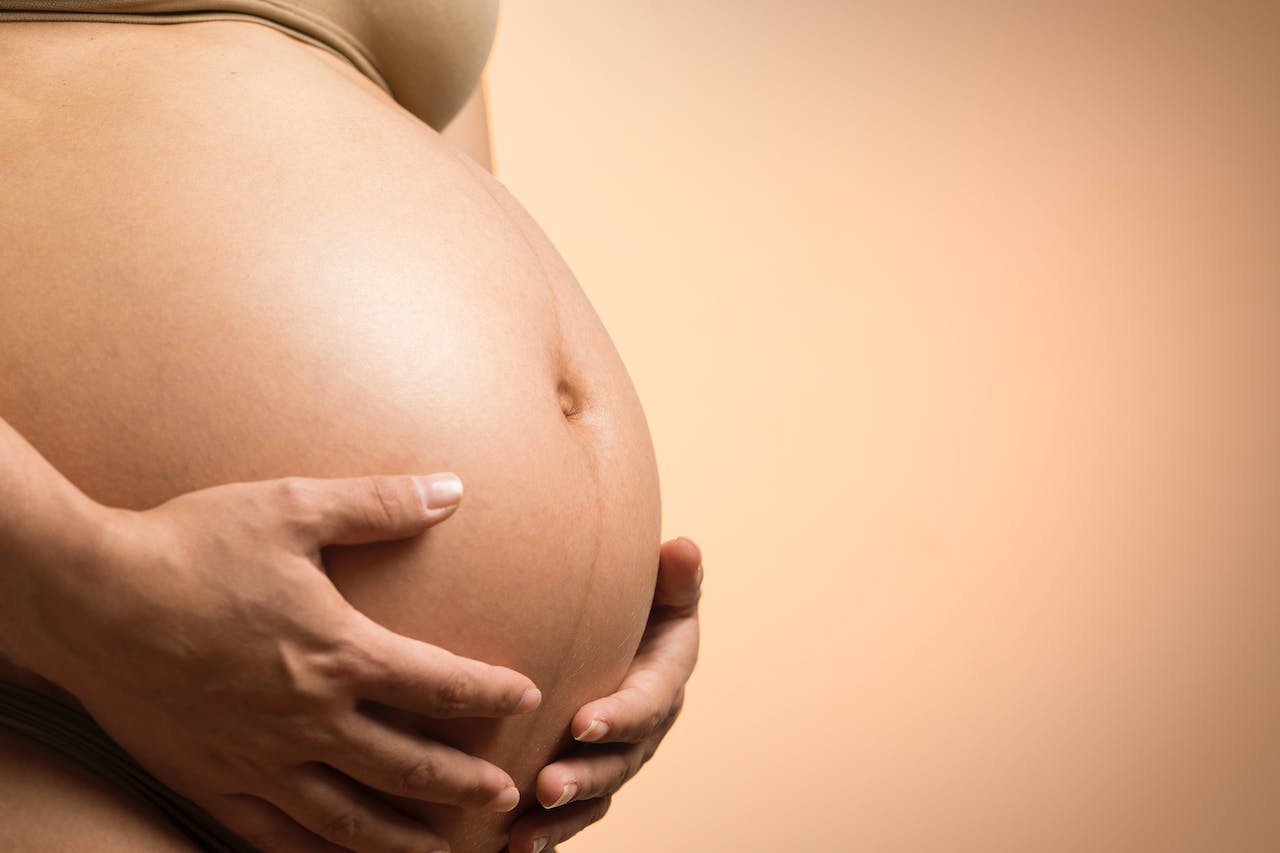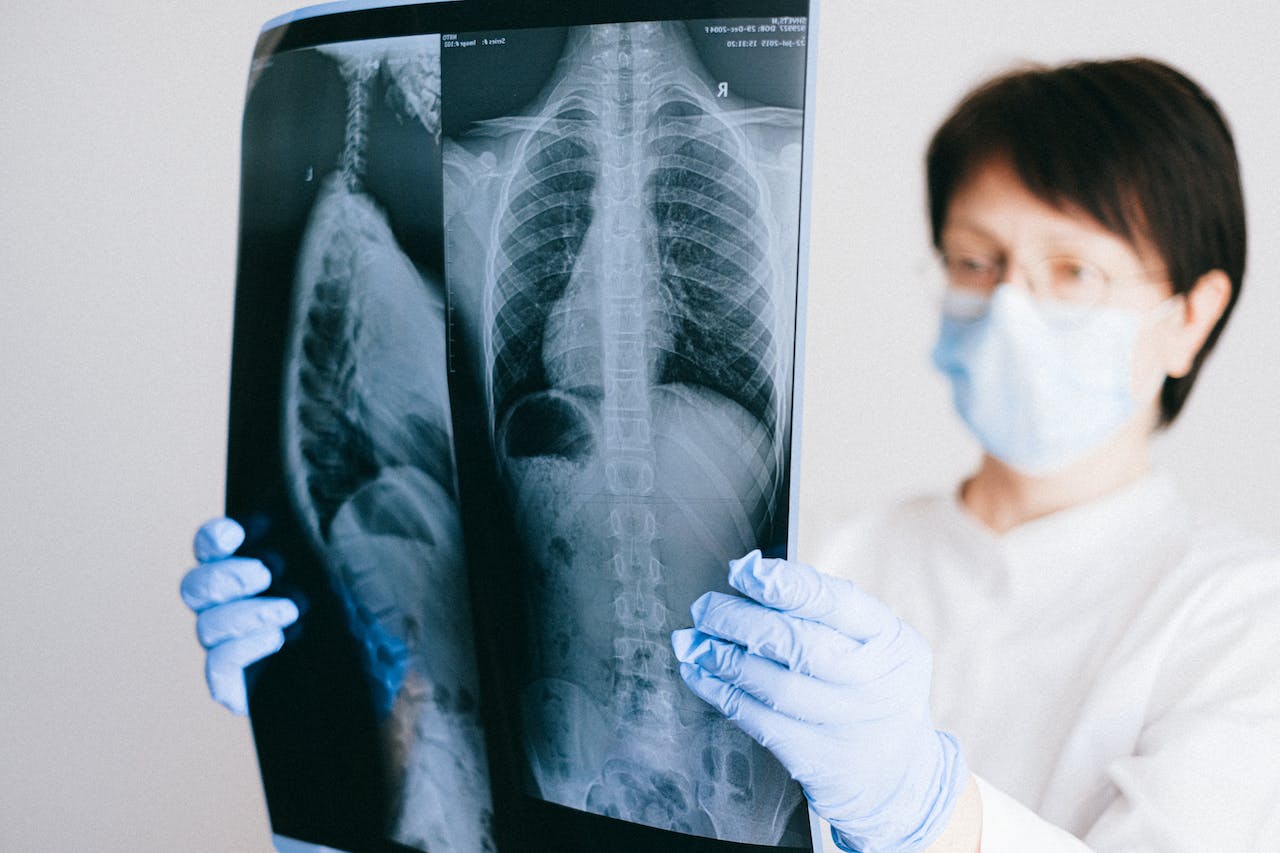Definition of Acute Appendicitis
Acute appendicitis is a common condition characterised by inflammation of the appendix, a worm-shaped structure attached to the first portion of the large intestine. It is usually located in the lower right region of the abdomen and is typically 6-10 cm long. Acute appendicitis is a medical emergency that often requires immediate attention.
Traditionally, the standard treatment for appendicitis has been surgery to remove the inflamed appendix, also known as an appendectomy. This surgical procedure can be done through open surgery or laparoscopic surgery, which involves using small incisions and special surgical instruments to remove the appendix. The surgery is generally safe and effective, allowing patients to resume their normal activities within a few weeks’ time.
However, there is ongoing research exploring the possibility of using intravenous antibiotics as an alternative to surgery for uncomplicated appendicitis. Antibiotic treatment aims to reduce inflammation and infection in the appendix, thus avoiding the need for surgery.

Symptoms of Appendicitis
The inflammation of the appendix in appendicitis can cause various symptoms, including abdominal pain, tenderness, and swelling. This pain usually starts around the belly button and then moves to the lower right side of the abdomen. In some cases, the pain may even migrate to the back or rectum. This “migratory pain” in appendicitis is one of the things your doctor will be looking for to help aid in your diagnosis. Migratory pain does not have to be present for your pain to be appendicitis, but it is a classic symptom that would point towards the diagnosis.
Some other common symptoms include:
- Loss of appetite
- Nausea
- Vomiting
- Fever
- Constipation or diarrhoea
- Pain worse with movement or coughing
It’s important to note that the severity and progression of symptoms can vary from person to person. Some individuals may experience a sudden onset of severe pain, while others may initially have milder discomfort that gradually worsens over time.
Symptoms are similar for appendicitis in adults and children, though appendicitis in adults may be less difficult to diagnose than appendicitis in children.

Diagnosis of Appendicitis
When it comes to diagnosing acute appendicitis, healthcare professionals rely on a combination of medical history, physical examination, and diagnostic tests. They will start by asking about your symptoms and assessing your abdomen for tenderness or swelling. Additionally, blood tests may be done to check for signs of infection or inflammation. In some cases, imaging tests such as an ultrasound or CT scan may be ordered to provide a clearer picture of the appendix and surrounding organs. These tests can help confirm the diagnosis and rule out other conditions with similar symptoms. However, it is important to note that diagnosing appendicitis can be challenging since the symptoms can vary and mimic other health issues. In some cases, the diagnosis cannot be definitively made without surgery.
Imaging Tests (Ultrasound/CT Scan)
When a patient presents with symptoms of acute appendicitis, healthcare providers may use imaging studies to help confirm the diagnosis. Two commonly used imaging tests for the diagnosis of appendicitis are ultrasound and CT scan.
Abdominal ultrasound uses high-frequency sound waves to create detailed images of the abdomen. During the procedure, a small handheld device called a transducer is moved over the abdomen, emitting sound waves that bounce back and create images on a computer screen. Ultrasound is non-invasive and does not involve radiation exposure, making it a safe option, especially for children and pregnant women. Unfortunately, abdominal ultrasound on its own (if it is normal) cannot fully rule out appendicitis.
On the other hand, CT scan (computed tomography) uses a combination of X-rays and computer technology to construct detailed cross-sectional images of the abdomen. CT scans provide more detailed images compared to ultrasound, allowing healthcare providers to visualise the inflamed appendix and surrounding structures more accurately. However, CT scans involve radiation and carry a small associated risk. Using CT to diagnose appendicitis in adults may be less risky, as radiation has greater long-term effects on children than adults.
Though CT scans are better than ultrasound at identifying appendicitis, again it cannot be used to definitively rule it out. They may, however, show other conditions such as an appendix mass, and are more likely to be diagnostic if you have a perforated appendicitis.
In certain cases, MRI (magnetic resonance imaging) may be used as a second-line imaging option, particularly for children and pregnant patients, as it does not involve radiation.
Ultimately, the choice of whether to do an imaging test will depend on the individual patient’s circumstances and the healthcare provider’s clinical judgment.
Lab Tests (Blood Work)
When it comes to diagnosing acute appendicitis, doctors may order various lab tests, including blood work. These tests are crucial in confirming the diagnosis and ruling out other conditions that may cause similar symptoms. One important blood test is the white blood cell count, which looks for signs of infection in the body. Another common blood test for abdominal pain and appendicitis is C-reactive Protein (CRP). This test looks at the level of inflammation in your body, and can point towards infection.
Elevated levels of white blood cells can indicate an infection, such as appendicitis. This test helps doctors in their assessment and decision-making process. Additionally, other lab tests, such as urine tests, may be ordered to exclude conditions like urinary tract infections that can mimic appendicitis symptoms.
It is important to note that obtaining and analysing lab test results can take some time. In certain cases where the diagnosis remains uncertain, doctors may recommend performing a procedure called laparoscopy. During this minimally invasive surgical procedure, a small camera is inserted into the abdomen to visualise the appendix and surrounding structures more clearly. If the appendix is found to be normal during the laparoscopy, it may still be removed as a precautionary measure.
In summary, lab tests play a crucial role in the diagnosis of appendicitis. Blood work, particularly the white blood cell count, helps to identify signs of infection. Additional tests may also be ordered to rule out other conditions. If the diagnosis remains uncertain, a laparoscopy may be recommended.

Physical Exam
A thorough physical exam is the most important test for the diagnosis of appendicitis as appendicitis is most often a clinical diagnosis. When something is a “clinical diagnosis” this means that even in the absence of blood tests and imaging studies the diagnosis can be made based on history and examination alone. Healthcare professionals will assess various components to determine the likelihood of an inflamed appendix.
During the examination, the presence of fever and tachycardia (elevated heart rate) may indicate an ongoing infection. The abdomen will be carefully examined for localised tenderness and muscular rigidity in the right iliac fossa, which is the lower right side of the abdomen and the typical location of the appendix. It is important to note that tenderness and rigidity may worsen with movement.
In addition to these components, healthcare providers may perform specific examination techniques to aid in the diagnosis. Rovsing’s sign involves applying pressure to the left lower abdomen and observing for pain in the right lower abdomen. The psoas stretch sign is assessed by extending the right hip against resistance, which can elicit pain if the appendix is inflamed. The obturator sign is evaluated by flexing the right hip and rotating the leg inward, checking for discomfort in the lower right abdomen.
By thoroughly evaluating these components and performing additional examination techniques, healthcare professionals can gather valuable information to help confirm or exclude the diagnosis of appendicitis. It is important to remember that appendicitis is a serious condition and consulting with a healthcare provider is necessary to receive an accurate diagnosis and appropriate treatment.
Standard Treatment for Appendicitis
When it comes to the treatment of acute appendicitis, there are two main options: surgery and antibiotics.
Antibiotic Therapy
Antibiotic treatment has emerged as a potential option for acute appendicitis, offering an alternative to surgery in certain cases. This approach involves the use of antibiotics to target and eradicate the infection in the inflamed appendix.
One of the key benefits of antibiotic treatment is that it avoids the need for surgical intervention, which can often be invasive and require a longer recovery period. Unfortunately, whether having surgery or antibiotic therapy you will need to stay in hospital with appendicitis.
This non-operative approach is particularly suitable for patients with uncomplicated appendicitis, where the appendix is inflamed but has not ruptured or formed an abscess.
However, it is important to note that antibiotic treatment is not suitable for all cases of acute appendicitis. In complicated appendicitis, where the appendix has ruptured or formed an abscess, surgery is typically necessary to remove the infected tissue and prevent further complications.
The choice of antibiotics for acute appendicitis treatment commonly includes drugs like amoxicillin-clavulanate, metronidazole, and ciprofloxacin. These medications are selected based on their effectiveness against the bacteria commonly associated with appendicitis.
While antibiotic treatment can be effective in many cases, it is important to closely monitor patients to ensure a satisfactory response to treatment. In some cases, initial treatment with antibiotics alone may not work, and surgical intervention may still be required.
Ultimately, the decision between antibiotic treatment and surgery for acute appendicitis is determined by the individual patient’s circumstances, severity of the condition, and the preferences of the healthcare team. It is crucial to consult with a healthcare professional for an accurate diagnosis and to discuss the most suitable treatment approach.
Recurrent Appendicitis After Antibiotic Therapy for Patients with Appendicitis
For patients with appendicitis who have received antibiotic therapy, recurrent appendicitis is a potential complication. Recurrent appendicitis occurs when the infection in the inflamed appendix returns after antibiotic treatment has been completed. This can be due to inadequate treatment or incomplete eradication of bacteria from the appendix. Symptoms of recurrent appendicitis are typically similar to those experienced during the initial episode, including
The risk of developing a recurrent appendicitis has been reported anywhere from as low as 7% to as high as 39% over a five year period. Further clinical trials are currently underway and as this becomes a more common treatment option for patients with appendicitis we may be able to ascertain more accurately the risk or recurrent appendicitis following antibiotic therapy. The success rate of antibiotic therapy for appendicitis will depend on a patient’s individual circumstances.

Laparoscopic Surgery
Laparoscopic surgery, also known as laparoscopy, is a minimally invasive procedure commonly used to remove the appendix in cases of acute appendicitis. This procedure is performed under a general anaesthetic, ensuring that you are asleep and pain-free throughout the surgery.
During laparoscopic surgery, several small incisions, usually around half an inch in size, are made in the abdomen. One of these incisions is used to insert a laparoscope into the abdominal cavity, which is a thin, long tube with a camera at the end. This allows the surgeon to visualise the area on a monitor.
Surgical tools are then inserted through the other small incisions to remove the inflamed appendix. Carbon dioxide gas is introduced to inflate the abdominal cavity, creating more space for the surgical instruments and allowing the surgeon to see more clearly. Once the appendix has been removed, the gas is released, and the incisions are closed with sutures or surgical staples.
If a laparoscopy reveals what looks like a normal appendix it is standard practice to remove the appendix anyway. Your surgeon will discuss the possibility of removing a normal appendix prior to your surgery.
After a laparoscopic appendicectomy, the recovery period is usually shorter compared to traditional open surgery. Most patients can go home within a day or two after the procedure and resume light activity. You will likely be sent home with pain medication to help facilitate this.
It will take longer to resume more strenuous activity, and recovery times will be shorter for those who had an uncomplicated appendicitis, where the appendix has not ruptured or formed an abscess. However, it’s important to follow your surgeon’s instructions for a smooth recovery.
Food is gradually reintroduced after surgery, starting with clear liquids such as water, tea, and apple juice. As tolerated, you can then progress to a full liquid diet, including soups and fruit juices. Eventually, solid foods are reintroduced, typically beginning with soft, easily digestible options. Your healthcare team will guide you on the appropriate diet plan based on your individual situation.
Possible Postoperative Complications of Surgery
Possible postoperative complications for acute appendicitis include wound infections, bleeding, intestinal blockage, and damage to nearby organs. These risks are typically low and most patients do not experience any major postoperative complications. However, it is important to be aware that such risks exist.
The risk of postoperative complications following surgery are higher for patients with complicated appendicitis, where they may have already developed an abscess or had a burst appendix.
Wound infections are the most common complication of surgical treatment, and are generally considered minor.

FAQs
Q: What is acute appendicitis?
Acute appendicitis is the inflammation of the appendix, a small organ located in the lower right side of the abdomen. This condition typically requires urgent medical attention and, in most cases, surgical intervention.
Q: Do I have to have surgery if I have appendicitis?
Classically surgery has been the standard treatment for acute appendicitis. For uncomplicated appendicitis, however, the option of intravenous antibiotic treatment has started to be offered by some doctors and healthcare providers. If you are particularly opposed to abdominal surgery, you could discuss your specific circumstances with your surgeon. They will be best placed to talk you through your individual circumstances and risks regarding either antibiotic treatment or surgery.
Q: Can acute appendicitis cause pain in lower left abdomen?
Appendicitis typically causes pain in the lower right side of the abdomen. However, it is possible for appendicitis-related pain to radiate to other parts of the abdomen such as the lower left side. The exact location of the pain can vary depending on the individual and other factors such as body position or posture.
Q: Can appendicitis be treated with antibiotics instead of surgery?
While intravenous antibiotics can be effective for uncomplicated acute appendicitis in some cases, it is not a suitable option for some patients. Prompt surgical removal of the inflamed appendix is currently the preferred method over antibiotic therapy to prevent complications of appendicitis and ensure a complete recovery.
Q: What is laparoscopic appendectomy?
Laparoscopic appendectomy is a minimally invasive surgical procedure to remove the inflamed appendix. It involves making several small incisions in the abdomen and using specialised surgical instruments and a camera to visualise and remove the appendix.
Q: What is the recovery like after laparoscopic appendectomy?
Recovery after laparoscopic appendectomy is typically shorter compared to traditional open surgery. Most patients can go home within a day or two after the procedure. Gradual reintroduction of food and following your surgeon’s instructions will ensure a smooth recovery.
Remember, if you experience symptoms of appendicitis, it is crucial to seek medical attention promptly to receive the appropriate treatment and avoid complications.
Q: What is the average age for acute appendicitis?
Acute appendicitis is most common among individuals between the ages of 10 and 30, although it can occur at any age. It is more likely to occur in males than females.
Q: Can pain in lower abdomen when I cough be appendicitis?
Pain in the lower abdomen while coughing can be a sign of acute appendicitis. It is important to note that this symptom can also be caused by other conditions, so it is best to seek medical advice if you experience this symptom. Other symptoms of appendicitis include abdominal pain, nausea, vomiting, fever, and loss of appetite.
Q: Does smoking cause appendicitis?
Smoking does not directly cause acute appendicitis. However, smoking is associated with an increased risk of appendicitis due to its effects on the immune system. Additionally, smokers are more likely to experience complications after appendectomy than non-smokers.
Q: What is a complicated appendicitis?
An uncomplicated appendicitis is the initial phase of acute appendicitis with no signs of perforation. A complicated appendicitis is when the appendix has ruptured or formed an abscess, and infected material has spread to other areas of the abdomen or nearby organs. This requires immediate surgical intervention and can be a life-threatening complication if not treated promptly.
Q: Should I give my child pain medication if I think they have acute appendicitis before going to A&E?
If your child is in pain it is safe to give them paracetamol or ibuprofen in the usual recommended way. If your child has features strongly suggestive of appendicitis, then doing this is unlikely to change how quickly they will be diagnosed and treated. It is standard practice for A&E to give painkillers at triage to children who are in pain if not already done so, and it is better to give them as soon as possible to minimise any discomfort.
Appendicitis is a very painful condition, and these over-the-counter painkillers are unlikely to change the examination findings of your doctor.
Q: Is the pain in appendicitis different in pregnant patients?
Pregnant patients may experience different symptoms of appendicitis compared to non-pregnant patients. During pregnancy, the appendix may be located higher up in the abdomen, making it difficult to detect during a physical examination. Additionally, changes in hormones and abdominal pressure caused by the growing baby can make diagnosing appendicitis more challenging as pain may present differently or be less severe.


